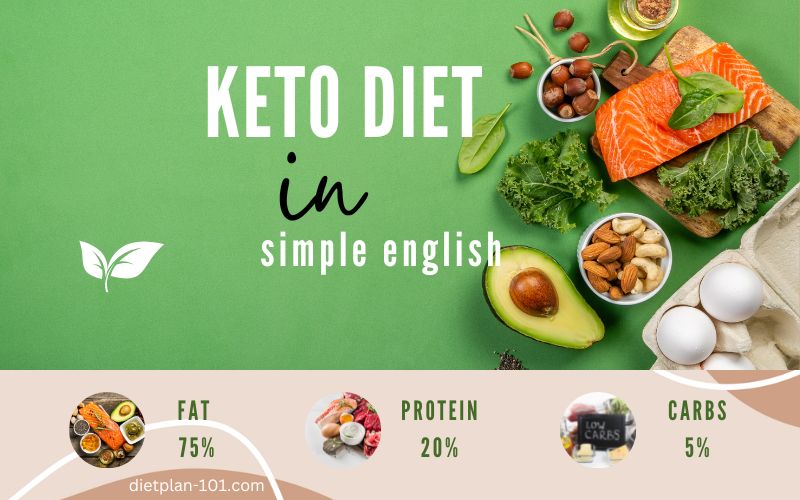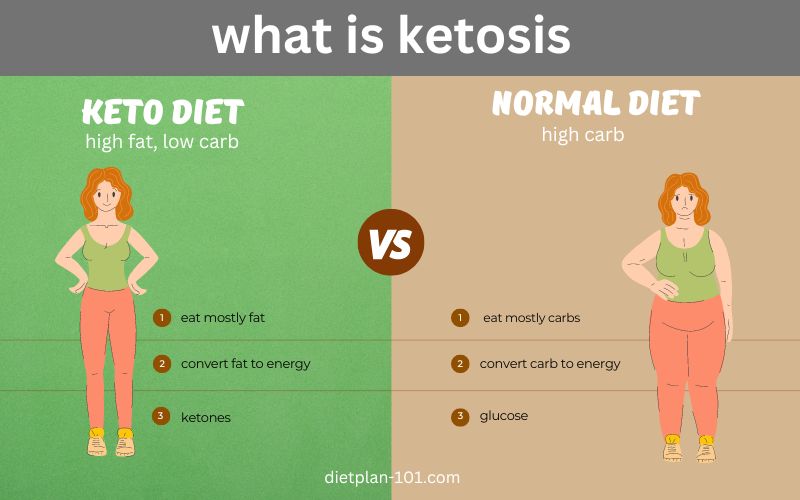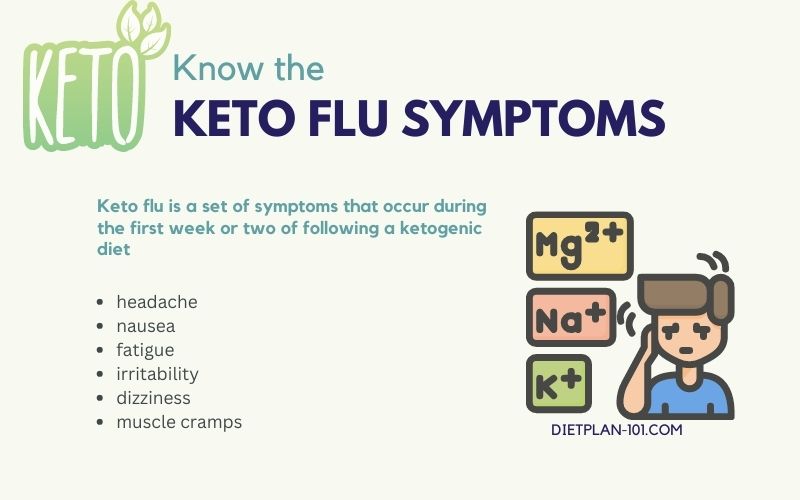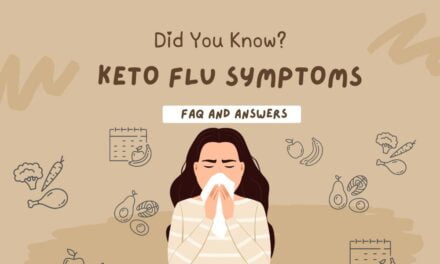What is keto diet?
It’s all about the ketones
Keto diet
The keto diet, which is short for ketogenic diet , is a low-carb, high-fat, and low-moderate protein way of eating. The goal is to get your body in a state called ketosis, which means that your body is using fat as its main source of energy instead of carbs.
That’s why it’s called the “keto” diet—it’s all about the ketones, or byproducts of fat being broken down.
The idea behind this diet is that cutting out carbs will force your body to use up its stores of glucose—the sugar that comes from carbs—and turn it into beta-hydroxybutyrate (BHB), which can be used as fuel instead of glucose. BHB has been shown to have anti-inflammatory properties and may even help with weight loss by lowering insulin levels and increasing fat burning.
What is ketosis?
Ketosis can be achieved by eating a very low-carb diet or fasting
In order to get into nutritional ketosis, you need to be following a very low-carb diet. The goal is to keep your blood glucose levels low enough that your body will start burning fat for energy instead of carbohydrates.
When you switch from burning glucose for energy to burning fats for energy, your body undergoes a process called ketosis. This is when your liver breaks down fat into fatty acids and ketones. Then, these fatty acids are converted into energy which can be used by cells throughout the body including those in the brain and nervous system.”
When your body produces ketones through carbohydrate restriction, it is called nutritional ketosis.
How to get into ketosis?
If you want to get into ketosis, the first thing you need to do is cut out carbs. This means no sugar or flour, no potatoes, and no rice.
Once your body has adjusted to this new way of eating, it will start producing ketones. Ketones are molecules that can be used as energy by your brain and muscles, instead of glucose.
When your body has used up all its glucose stores and starts burning fat for fuel instead of carbs, it’s said to be in ketosis.
To get into ketosis, you need to lower your carb intake to around 20-50 grams per day, while increasing your fat intake to 70% of your total calories. Your protein intake should be kept low at around 20%. 20 grams of carbs is about 1/2 cup of rice, or 1 small potato, or 1/2 cup of pasta, or half-bun.
How long does it take to go into ketosis?
It depends on your body and the amount of fat that you have.
If you’re overweight, it will take longer to get into ketosis than if you’re already thin.
It takes about 2-3 days for your body to go into ketosis after starting a keto diet. The first day is called “carb-withdrawal,” and it’s when your body starts to use up its glucose stores. This can cause headaches, fatigue, and nausea in some people.
The second day is called “keto-adaptation,” when your body shifts its metabolism over from burning glucose to burning fat instead (which is what happens during ketosis). This typically causes constipation and cravings for carbs because your body is craving sugar—but these symptoms should fade within a few days as your body adjusts to using fat instead of sugar as its primary source of energy.
How to get into ketosis in 24 hours?
Nothing wrong with being impatient, but…
Fasting and exercising are the fastest ways to get into ketosis. When you fast, your body goes into ketosis as an alternative energy source. Exercise will help accelerate the process.
There’s nothing wrong with being impatient, but to achieve ketosis the right way, it’s best to stick with the basics. Eat a normal ketogenic diet, work out regularly, and maintain your minerals. And when the sugar cravings strike, take low-carb snacks.
Ketosis induced by carbs restriction in diet is referred to as nutritional ketosis, it is a better way to get into ketosis without being hungry, tired, and sore, but fasting (starvation) and exercise are the most effective (fastest).
The key is to start small when transitioning from a high-carbohydrate diet to a low-carbohydrate diet. This means eating more protein at first, then slowly decreasing the amount of carbohydrates eaten each day until your body begins burning fat for fuel instead of sugar or glucose (glucose).
How do I know if I’m actually in ketosis?
How to know when you are in ketosis?
You are in nutritional ketosis if your blood ketone levels are between 0.5 to 3 mg/dL.
If you’re new to keto, or just want to make sure you’re in ketosis, testing your ketone level is a great way to see if you’re on track.
Ketone testing kits are available online. Most kits will give you a reading within minutes and are fairly inexpensive.
You can also use the urine strips that test for ketones, but these take longer to get results and may not be as accurate as blood tests.
Ketosis signs and symtoms
Several key signs and symptoms can help you identify whether you are in ketosis. Some people find that their bodies adapt quickly to the diet, while others need a little more time. Some people may not feel any of these signs right away; others may feel them right away.
- Increased urination: This is one of the earliest signs of being in ketosis. Your body uses fat as its primary energy source, so when this happens, your kidneys begin excreting excess by-products (like urea) through urination. As time goes on and your body becomes more efficient at using fat as fuel and less reliant on carbohydrates, this process will slow down significantly until it stops altogether (which usually happens within a few days).
- Dry mouth: When your body starts using fat for energy instead of carbohydrates
- Bad breath: Another common sign of ketosis is bad breath. This may be due to the fact that when entering ketosis, your body begins breaking down fat cells for energy, which means there will be increased amounts of acetone in your bloodstream, causing an unpleasant smell on your breath. The ketone acetone can be detected in the breath of people who are in the ketosis state. The smell is usually described as fruity or like nail polish remover.
Positive signs: If you have been eating low-carb, high-fat foods for a while and notice an increase in energy levels, lower blood sugar levels, clearer thinking, less hunger, and looking leaner than usual—all good signs!
What is keto flu?
So you’re on the keto diet, and you’re feeling great. You’ve got a ton of energy, and you’re losing weight like crazy!
But then one day you wake up feeling run down and tired, and your head is pounding. Your muscles are killing you—and it feels like they won’t stop. And there’s this weird sort of nausea that won’t go away.
Signs of keto flu
Sometimes it can be hard to get through those first few weeks where our bodies are adjusting to the new way of eating. Here’s what you need to know about keto flu:
Keto flu symptoms
Keto flu is a set of symptoms that occur during the first week or two of following a ketogenic diet. The most common symptoms include headache, nausea, fatigue, irritability, dizziness, and muscle cramps. These side effects are caused by changes in your metabolism as it adjusts to burning fat instead of carbohydrates. While they’re not dangerous or life-threatening, they’re uncomfortable enough that many people give up on their new diet before they even see results.
How long does the keto flu last?
The symptoms usually last for about a week. They can be pretty unpleasant, but they’re also totally normal and temporary. If you’re feeling like you’ve got the flu, don’t freak out—it’s just keto flu, a temporary state of feeling unwell that happens to some people when they first start a keto diet.
Keto diet what to eat?
The idea behind Keto is that by reducing your carb intake, you’ll be able to produce more ketones in your body. These ketones will then be used as energy, rather than the glucose that comes from carbs.
What is keto diet plan?
Keto diet plan in a nutshell: you eat lots of good fat, a low to moderate amount of protein, lots of vegetables, and a small indefinite amount of carbs. In keto diet, it is a very different food pyramid than we are used to.
In simple English, Keto is a low-carb diet, but It’s not just about eating eggs and bacon all day, it’s also about restricting your intake of sugar and carbohydrates.
Keto diet food list
The ketogenic diet is a high-fat, low-moderate protein, low-carbohydrate diet. Keto diet typically restricts carbs to 20–50 grams per day. This is an extremely low amount of carbohydrates for most people.
It can be overwhelming to know what foods are okay to eat on the keto diet. Here’s our guide to the foods that are allowed on the keto diet and those you need to avoid.
What You Can Eat
You can eat meat, fish, poultry, eggs, dairy products (including butter), nuts and seeds, healthy oils like coconut oil and olive oil, low-carb veggies like leafy greens and broccoli, berries (in moderation), low-carb fruits such as avocado and tomatoes.
What You Can’t Eat
You can’t eat grains like rice or wheat; legumes (beans) such as lentils or kidney beans; starchy vegetables like potatoes or corn; root vegetables such as carrots or parsnips; fruit juices or sweeteners; sugar-free foods or artificial sweeteners; alcohol (beer contains carbs); sugary snacks such as cookies and candy bars; processed foods with added sugars such as cereals made with frosting on top.
Keto diet carb limit
So how many carbs should you be eating on a keto diet?
The answer: it depends.
A keto diet limits your carbohydrate intake to 20-50 grams per day. This is far less than 250-300 grams per day, which is the average American’s daily intake of carbohydrates.
The answer to this question depends on who you are and what your goals are. If you’re just looking to see results fast, then you may want to keep your carb intake to about 20 grams per day. But if you’re looking for something more sustainable—for example, if you want to maintain your new weight loss—then it’s better to have 50 grams or less per day. This number can be adjusted as needed as you get used to the diet.
Keto diet advantages and disadvantages
The ketogenic diet was originally designed in the 1920s to treat epilepsy in children. It has been studied for other conditions as well as for weight loss.
Advantages of ketogenic diets include:
- Weight loss: The keto diet is one of the most effective ways to lose weight because it forces your body to burn fat instead of glucose.
- Improved blood sugar control: people with diabetes should only follow the keto diet under the supervision of their doctor.
- More stable energy levels during the day: the production of ketones leads to an increase in energy levels.
- Lower insulin levels (helps with PCOS): As a treatment for Polycystic Ovary Syndrome (PCOS), some women have reported that following the ketogenic diet (KD) has helped increase their fertility, improve their insulin sensitivity and reduce excess body fat.
Risks of the keto diet and Keto disadvantages:
- Bad breath, which is caused by higher levels of acetone in your breath.
- Loss of muscle mass is another possible side effect of the keto diet. This happens because your body starts to burn more fat than usual, so you don’t need as much protein to fuel workouts or everyday activities like walking around or climbing stairs—and this can lead to muscle loss over time.
- If you have type 1 diabetes or other metabolic disorders (such as polycystic ovarian syndrome), then following a high-fat diet could be dangerous because it would cause your blood sugar levels to spike dangerously high after eating meals with too much protein.
- You won’t be able to eat as much food as you used to.
Easy Keto meal plan: sample to get you started
If you’re new to the keto diet, it can be helpful to start with a sample meal plan. This will help you get a feel for what kinds of foods are allowed and how much you should eat at each meal.
A sample keto diet meal plan might look something like this:
Breakfast: A keto-friendly breakfast can include eggs and bacon, or a low-carb cereal with almond milk. It is important to choose foods that are high in fat and low in carbohydrates to help you stay in ketosis.
Lunch: Lunch should be a large salad with protein and fat sources such as chicken, cheese and avocado.
Dinner: Dinner should be a very large portion of protein with some vegetables or cheese as side dishes. Examples include chicken breast, steak or salmon with broccoli or spinach.
Keto friendly snacks ideas
If you’re on the keto diet, you probably know that snacking is a big part of the plan. But sometimes, you run out of ideas. We’ve got you covered! Below are some of our favorite keto snacks.
Hard-boiled eggs. They’re super easy to make, and they’re a perfect source of protein and healthy fats that will keep you going through the day without slowing down your weight loss.
Avocado toast with smoked salmon or avocado and lemon juice (or both!). Avocado is rich in healthy fats and fiber, which will help keep hunger at bay while giving you plenty of energy for the day ahead.
Protein bars with 25 grams of protein or more per serving. These are great because they’ll keep hunger at bay while providing enough fuel to get through your day and stay focused on your goals.
Cauliflower popcorn: Toss cauliflower florets in olive oil, salt, and pepper and bake at 400 degrees until browned. This snack is surprisingly tasty.
Kale chips: Kale is an excellent source of vitamins A and C, as well as calcium, iron and potassium. It’s also a good source of protein
Cheese stick: Look for a hard cheese (like cheddar) or string cheese that’s low in carbs (and high in fat). You can snack on it while watching TV or go to town with it on top of a salad or sandwich!
Nuts – Nuts such as almonds, peanuts and cashews are great choices because they have no added sugar or unhealthy fats.
Seeds such as flax seeds, chia seeds and hemp seeds contain high amounts of healthy fats that will keep you feeling satisfied for longer periods of time than many other snack options available today.
Easy keto diet for beginners – the bottom line
Here’s the real story about the keto diet: it’s not magical. It’s not going to cure all your ailments. It’s not even necessarily that great for you (though there are a lot of reasons it might be). But if you’re trying to lose weight, especially some stubborn fat, and want to know what might be helpful to achieve that – then this is the article for you.
As you can tell from the above, this diet does not require counting every calorie you take in, or monitoring your carbs intake. Yes, some of the foods you eat have carbs, but the trick is to find out which ones are acceptable and which are not.
Reference:








